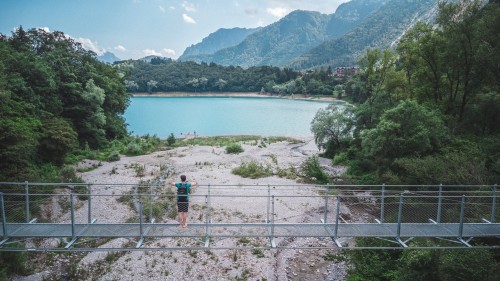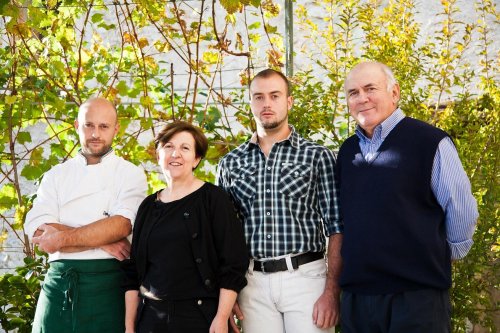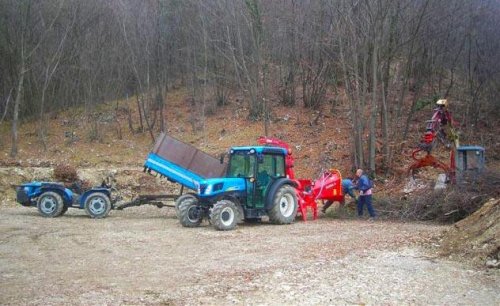Agritur Calvola's history is deeply intertwined with the rural landscape, rooted in a society centred on subsistence farming and a profound connection with the local land.
Luigi Santoni, our forefather, was forced to emigrate to the USA in the early 1900s, where he was later joined by his wife and three of their four children in 1948.
Only their daughter Maria, who married Costante, remained in Calvola, dedicated to cultivating the land of both families.
Until 1985, the Santoni family primarily focused on cultivating vegetables, fruit trees, vines, and raising some livestock.
Then came the idea to showcase typical Trentino delicacies, thereby strengthening the connection between local produce and the land.
On 6 June 1991, Bruno and Lucia Santoni opened the agriturismo, offering a wide range of dishes rooted in the local gastronomic tradition.
The restaurant service is run by Lucia Santoni’s extended family, including her husband and two sons, Amedeo and Matteo. The latter specialises in hotel and kitchen services.
The farm's cultivation methods have possessed organic certification since 1996.
This long-standing achievement underscores the family’s commitment to growing quality agricultural produce and showcasing the culinary uniqueness of the local land.
In 1998, the farm expanded its tourism offerings, opening six guest rooms.
The family’s attention to detail and respect for the local land, integral to obtaining quality agricultural products, have been pivotal to the ongoing success of Agritur Calvola.
Amedeo, a graduate of the Agricultural Institute of San Michele all'Adige (TN), cultivates agricultural products with his uncle, Bruno. Together, they have built a strong partnership that combines tradition with technical developments to enhance offerings from the family land.





